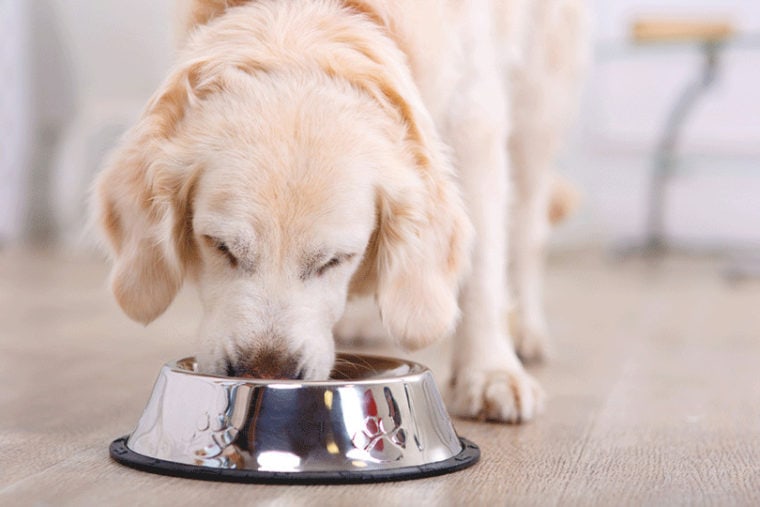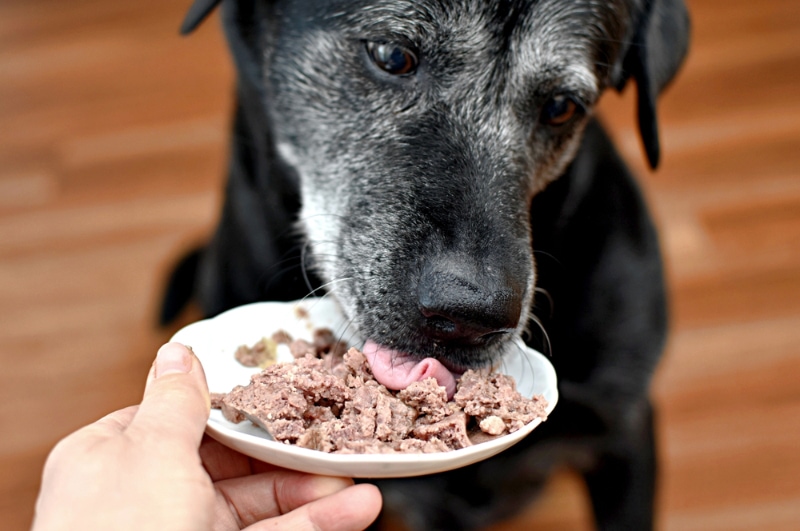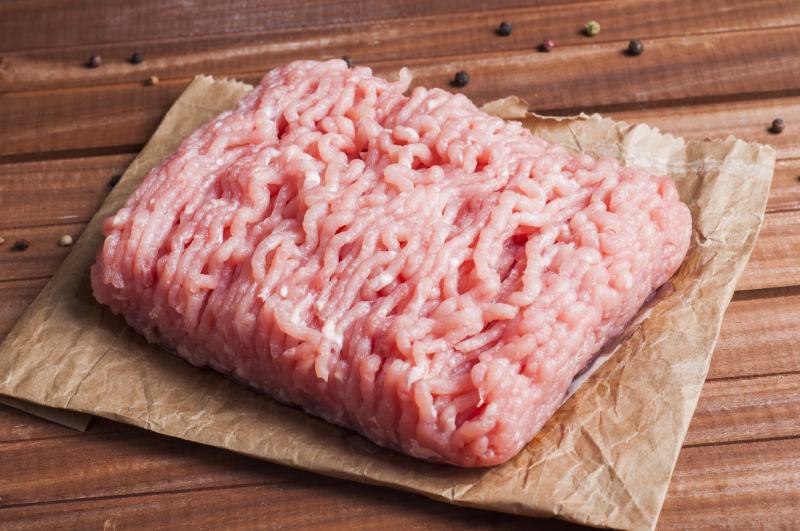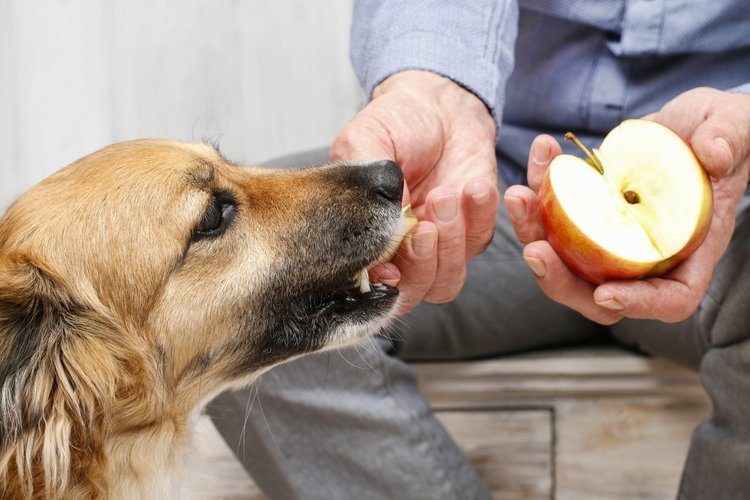
Quite often, when we are reading about food allergies or intolerances, the term “novel protein” will come up. Feeding your pet a novel protein diet may help to diagnose the problem, or your pet may require a novel protein diet to control their condition. But what exactly does this mean? What is a novel protein diet? The answer is actually a lot less complicated than you might think.
A novel protein refers to a protein source, usually a type of meat, that your pet has not eaten before. It is common for more unusual protein sources, such as pea protein, ostrich, insects, and even feathers, to be used in novel protein diets, but this doesn’t necessarily have to be the case.
Let’s take a look at what a novel protein diet really is and when you might need to use one.
Why Does My Pet Need a Novel Protein Diet?
There are two main reasons your vet will recommend a novel protein diet for your cat or dog: diagnosis of a food sensitivity or treatment of a food sensitivity.

Diagnosis of a Food Sensitivity
There are terms often used interchangeably when it comes to food reactions—sensitivity, allergy, intolerance, or hypersensitivity—but this isn’t entirely accurate. A food allergy or hypersensitivity is an immune-mediated response to an allergen, whereas a sensitivity or intolerance refers to a more direct reaction to a food not involving the immune system. Skin reactions to food tend to be true allergies, and most gastrointestinal reactions are linked to dietary sensitivities or intolerance.
Although the mode of action is different, how we diagnose and treat the problem is quite similar.

These signs may not appear immediately after being introduced to a particular food, and they may even develop after years of being on the same diet, which can make food reactions harder to diagnose. Part of that diagnosis will involve ruling out any other causes of your pet’s clinical signs, which may include:
This process can be quite time-consuming and expensive but is essential. It is quite common for dogs with skin reactions to food to have secondary bacterial or yeast infections, and these must be treated first. Another challenge to diagnosing a food allergy is that it can occur alongside or even trigger other problems, such as atopic dermatitis (atopy) or protein-losing enteropathy.
Once your vet has ruled out any other potential causes of your pet’s skin or gastrointestinal signs, they will likely recommend a food trial, also known as an elimination diet. Because most food reactions are to animal proteins, the best way to find out if food is the cause of your cat or dog’s clinical signs is to put them on a food trial using a protein that their immune system has not encountered before, and therefore, cannot be sensitive to. To be successful, your pet will need to eat this food and nothing else for a period of 6 to 12 weeks to see if their signs improve. If they do, we know that the problem is with the food. If not, further testing may be needed.
What About Allergy Testing?
Allergy testing using blood, saliva, or intradermal testing is available to identify the source of skin allergies for dogs. However, there is some debate in the veterinary world as to just how accurate these tests are. These tests are known to have a high rate of false positives, especially in dogs less than 12 months old, and food trials continue to be the most accurate and reliable method of diagnosing food allergies, both for humans and pets.

Treatment of a Food Allergy
Once it has been established that your pet’s gastrointestinal or skin condition is triggered by food, we need to have a long-term plan. If your cat or dog enjoys the food they have been given as part of their food trial, some owners choose to keep their pet on that food long-term, but sometimes the food used in the trial may not provide all the nutrients needed in a long-term diet.
To prove that the signs are definitely caused by food, we need to “challenge” your pet’s sensitivity with different proteins to see which ingredients cause a reaction. This can be a long and tedious process, but it’s worth it if it turns out that your pet is only allergic to one thing! This also allows more freedom when it comes to food options for your pet, and
Dogs and cats that have a skin-based allergy may also be sensitive to environmental allergens and often require medication to suppress their immune system. These can be expensive and have multiple side effects. However, if we can reduce their allergen load by finding a food they can eat/avoid that helps reduce the intensity of their clinical signs, then we may be able to reduce the dose of those medications.
What Is a Novel Protein?
A novel protein is a protein source, usually meat, that your pet has never eaten before. We are aiming to find a single protein that their immune system has not encountered before. That way, their immune system either won’t react to that protein or won’t have had a chance to develop a sensitivity to it.
The other requirement of using a novel protein for a diet trial is that the food must consist of only that protein, so it’s a single protein source. Many foods will list one meat type on the front of the pack, but a check of the ingredients list will contain a plethora of additions like beef fat, pork fat, chicken meal, meat meal, and fish meal, so be on the lookout for these. If in doubt, check with your vet to make sure you’re selecting the right food.
The range of novel protein options for each individual pet will depend on what foods they are currently eating and what they have regularly eaten in the past.

Are Some Novel Proteins Better Than Others?
Theoretically, provided your cat or dog has not eaten the protein being used in the elimination diet, it will work as an appropriate novel protein. However, given that many commercial pet foods will use ingredients other than what is listed on the front of the bag, your pet may have been fed beef, pork, or fish without you realizing.
With this in mind, it can be worth selecting a less commonly used ingredient, such as:
Animal or Plant Protein — Which Is Best?
Plant-based proteins are becoming a common feature of both human and pet foods due to their sustainability and low allergen qualities. There is evidence that dogs can survive entirely on a plant-based diet, provided that the diet contains the right balance of protein, fats, carbohydrates, minerals, and vitamins. Some studies even suggest that a plant-based diet may improve the health and longevity of our canine companions, but only if commercially produced foods, which have been tested and approved as safe, are used.
Although there is limited proof of adverse health consequences for cats that have been fed a commercially produced, nutritionally balanced plant-based diet including taurine supplementation, there is currently insufficient evidence to support feeding an obligate carnivore an entirely meat-free diet.
For dogs that have a wider range of food sensitivities, a plant-based diet may be a potential long-term solution. For cats, however, although a plant-based food might work for a diet trial, there needs to be more research before we can recommend it as a permanent option.
FAQs
Are Some Novel Proteins Better Than Others?
Beef and chicken are the most common cause of food allergies in cats and dogs, so it is best to steer clear of these when choosing your novel protein diet. Because many commercial diets will include other meat products in their recipe, it is often better to choose a less common meat protein, such as rabbit, venison, or duck, to be more confident that it is, in fact, a novel protein for your pet.
Can My Pet Have Any Treats When They Are on a Novel Protein Diet?
If you are starting your pet on a food trial, it is best to talk to your vet about exactly what they can and can’t eat. Usually, if a treat consists of the same protein being used in the trial, it could be included.
Can You Feed a Raw Novel Protein Diet?
Absolutely. This may be an easier option when it comes to avoiding hidden ingredients. The most important thing to keep in mind, both when using a raw single protein diet and raw feeding in general, is that the diet must be nutritionally balanced. Feeding raw meat alone will deprive your pet of essential vitamins and minerals. For cats in particular, taurine deficiency can occur if they are not fed the right components, which can result in digestive issues, blindness, and heart disease.
Care must always be taken when feeding your pet a raw diet to reduce the risk of spreading pathogens like Salmonella and Campylobacter, which can affect your pets and your family.

What About Hydrolyzed Diets?
Hydrolyzed diets use meat ingredients that have been broken down into tiny particles in a process called hydrolysis, making it more difficult for the immune system to recognize them as allergens. Hydrolyzed diets can be a good option for pets with food sensitivities; however, the hydrolysis process can make the food less tasty, and there is evidence that it does not completely eliminate all allergens from the food. Hydrolyzed diets are also quite expensive.
Should I Feed My Pet a Single Protein Diet if They Don’t Have Allergies?
If your pet doesn’t currently have any signs of gastrointestinal or skin allergies, we would advise against feeding them hydrolyzed, hypoallergenic, or anallergenic foods, but keeping your cat or dog’s diet limited to one or two protein types is a good idea. As we saw from the examples above, pets that are fed a smorgasbord of different types of meat will have a much smaller selection of novel proteins to choose from if they develop sensitivities later in life.
What About Gluten?
Many pet foods promote being grain-free or gluten-free as an important factor for dog food selection. However, the incidence of wheat or gluten intolerance in dogs is reported to be somewhere between 0.1 to 1% of the population, with a higher incidence in Irish Setters and Border Terriers. An additional consideration when choosing a grain-free diet is that research has shown a potential link between certain types of grain-free diets and heart disease in dogs. There is still much work to be done in this area, but it does support the idea that a gluten-free diet should only be implemented if your dog has a proven wheat allergy.
Conclusion
A novel protein diet is one that uses a single protein that your cat or dog has not eaten before. If your pet’s clinical signs improve with an elimination diet, we can confirm that those signs are being caused by food by undertaking a food challenge. Take care when selecting food for a diet trial, as many commercial foods contain additional meat ingredients besides what is written on the front of the pack. Diet trials should be performed under the guidance of your veterinary surgeon, who can help you select the ideal food.
From there, your cat or dog may stay on that food if appropriate, or reintroduce ingredients one by one to determine which meat protein is triggering a reaction.
While the average non-allergic dog or cat does not need to be on a hypoallergenic diet, it is a good idea to limit the number of different meat types they are fed regularly in case a novel protein diet is needed in the future.
Always consult with your vet before starting down the path of an elimination diet, as it will not be a reliable exercise unless other causes of your pet’s clinical signs have been ruled out or treated.
Featured Image Credit: Dmytro Zinkevych, Shutterstock












